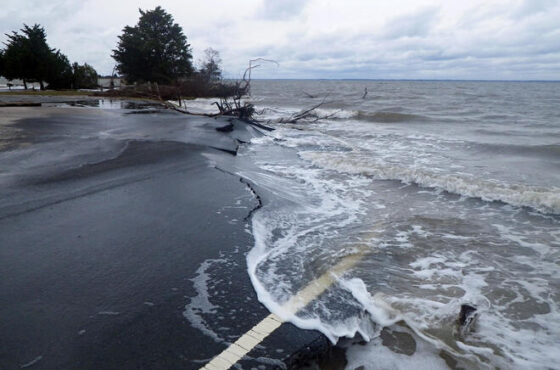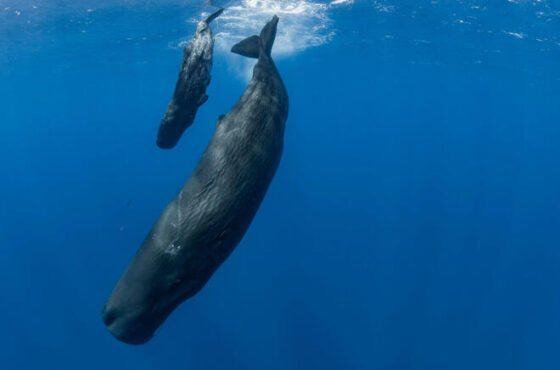Trump Picks Two for FERC—Will Bipartisanship Continue?
Published by the Natural Resources Defense Fund
President Trump has finally announced his intent to nominate candidates for two of the three open seats on the Federal Energy Regulatory Commission (FERC) and send their names to the U.S. Senate for approval. Assuming they are confirmed, the two new commissioners will help shape America’s energy future. We encourage them to continue FERC’s bipartisan tradition of clean energy progress for the electricity grid amid today’s rapidly evolving energy landscape.
FERC—the independent federal agency that oversees the high power electric grid, natural gas pipelines, and hydroelectric dam licensing—has been without a quorum since February 3, when then-Chairman Norman Bay resigned, leaving the remaining Democratic commissioners (Acting Chairman Cheryl LaFleur and Colette Honorable) in two of the five seats.
The two new nominees are Neil Chatterjee (Senate Majority Leader Mitch McConnell’s energy advisor), and Robert Powelson (commissioner on the Pennsylvania Public Utility Commission and current president of the National Association of Regulatory Utility Commissioners). There also are rumors that Kevin McIntyre, an energy attorney at the large international law firm Jones Day, also will be nominated in the near future. (More about all three of them here.)
As long as there are only four members of FERC, the possibility exists for a 2-2 deadlock. Adding more uncertainty is that Commissioner Honorable’s term expires June 30, 2017. She’s announced her decision not to seek another term, although she could agree to stay on until her replacement is named. Meanwhile, the White House has not announced who it wants to chair the commission.
Our simple message to the nominees: FERC needs to keep up with the fast-changing electric grid and avoid creating new barriers through inaction or new limitations. FERC has a strong bipartisan tradition of removing electricity market and planning barriers to new energy resources. With wind and solar hitting new output peaks daily, and energy storage coming on strong, FERC-regulated energy markets and planning must continue to evolve to reflect the new reality of a more efficient, cleaner, and affordable grid.
Pending Challenges
FERC has a full plate of energy challenges before it. For example: one of the hottest issues in the world of electricity this year is whether state renewable energy standards and numerous other energy policies can coexist peacefully with FERC-regulated energy markets. FERC held a two-day public meeting in early May on the topic, which is going to be a growing focus for FERC and the regional grid markets around the country for the remainder of this year and well into the future. But we believe well-designed FERC markets can co-exist with, rather than undermine, state energy policies.
Another hot issue—the Department of Energy’s hurried review of the effects of clean energy on grid reliability. Neither FERC nor the grid operators responsible for keeping the lights on were consulted before Energy Secretary Perry announced the study last month, EnergyWire reported. As we and many others have said, wind and solar power contribute to a dependable power supply, help to prevent blackouts and other grid disturbances, and create a more flexible and diverse generation fleet. FERC could play a critical role in the Department of Energy’s review by separating fact from political agenda.
Yet another critical topic: last fall FERC proposed an important new standard to remove barriers to market entry for the electricity generated from rooftop solar panels, electric vehicles plugged into the grid, and other customer-owned energy storage and “distributed energy resources.” Critically, FERC’s proposal includes allowing storage and other DERs to combine for the purposes of participating in power markets—in other words, aggregating or pooling resources for administrative and operational efficiency. It’s a smart, commonsense reform. Once the Commission regains its quorum, it should move forward and issue the final rule, including the aggregation provisions, to prevent ongoing discrimination against customer-owned resources in FERC-regulated electricity markets.

Infrastructure is a hot topic in Washington, and here FERC also has an important role to play. While America has some of the world’s best renewable energy resources, there is a need for environmentally protective transmission infrastructure to connect the top wind resources, located predominantly in remote areas, to distant cities and communities with a demand for low-cost clean energy. A major barrier is the lack of a single planning framework among regional grid planning regions for these projects. With relatively minor changes to planning rules, FERC can spur new clean energy-focused transmission projects. As an added benefit, these projects will reduce the need for new natural gas plants (which emit carbon pollution) and pipeline development, as well as the health and other problems associated with natural gas extraction.
Speaking of natural gas, FERC continues to face criticisms for its approvals of new interstate natural gas pipelines and liquefied natural gas terminals. FERC can and should take significant additional steps to improve gas market efficiencies and maximize the use of existing pipelines over new pipes.
As the nomination process moves forward, we encourage these nominees to keep FERC’s responsibility to protect the public interest uppermost in their minds. This, plus a healthy bipartisan approach, will provide reason for optimism about the commission’s future.
This blog provides general information, not legal advice. If you need legal help, please consult a lawyer in your state.
Read the full article at: https://www.nrdc.org/experts/john-moore/trump-picks-two-ferc-will-bipartisanship-continue




